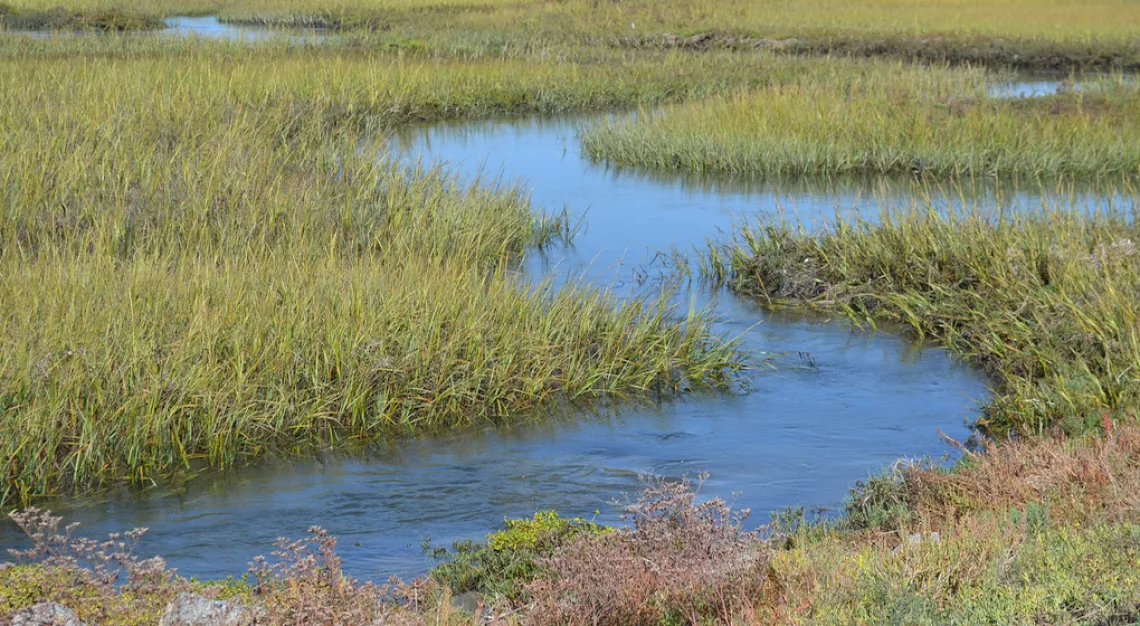Can we help drowning salt marshes?

Cordgrass at Seal Beach National Wildlife Refuge
U.S. Climate Resilience Toolkit
A study by the SW CASC researchers titled “Increasing Salt Marsh Elevation Using Sediment Augmentation: Critical Insights from Surface Sediments and Sediment Cores” was recently published in Environmental Management. This project, led by a previous SW CASC Natural Resources Workforce Development Fellow, Elizabeth Fard, aimed to understand the differences between artificial accretion and natural accretion in salt marshes in Seal Beach National Wildlife Refuge.
Salt marshes are habitats for endangered nesting birds, such as the light-footed Ridgway’s rail and Belding’s savannah sparrow, and are threatened by coastal squeezing (when sea-level rise and coastal development limit an ecosystem's ability to migrate inland). The researchers found the material used for the artificial sediment accretion was much coarser and was applied at a much faster rate compared to the natural sediment accretion. This altered the response of vegetation and invertebrate communities following the sediment augmentation.
This study shows the significance of understanding the long-term context and natural variability of both sediment and accretion rates when applying management strategies to marshes that are at high risk of drowning from sea-level rise. The authors recommend that sediment cores should be used as a tool to inform sediment augmentation and marsh restoration planning.

